From October 21st to 22nd, the 2023 CCF China Open Source Conference hosted by the China Computer Federation (CCF) and the Open Atom Open Source Foundation was successfully held in Changsha. Among them, the open source commercialization sub-forum is hosted by Open Source China, with Ma Yue, Chairman of Open Source China, as the chairman. Many experts from open source native commercial companies shared the best practices for commercializing open source projects, providing more developers and enterprises with experience that can be used for reference, and jointly promote the construction of open source ecosystem and help the development of open source ecosystem.
Ma Yue, Chairman of Open Source China, delivered a keynote speech titled "The Current Situation and Thoughts of Open Source Business Development in China". He pointed out that current open source startups have "seven hates": no brand, no traffic, no sales ability, no qualifications, no delivery ability, no cash flow, and no capital channels. These have seriously hindered the further development and growth of start-up companies. The key to solving the "seven hates" of open source startups lies in the open source startup alliance. The so-called open source entrepreneurial consortium is a value stream platform that provides a common service model, a plug-in open platform that integrates and automates the IT value chain, integrates various open source or business ecological capabilities in the market, and implements customer scenario services.
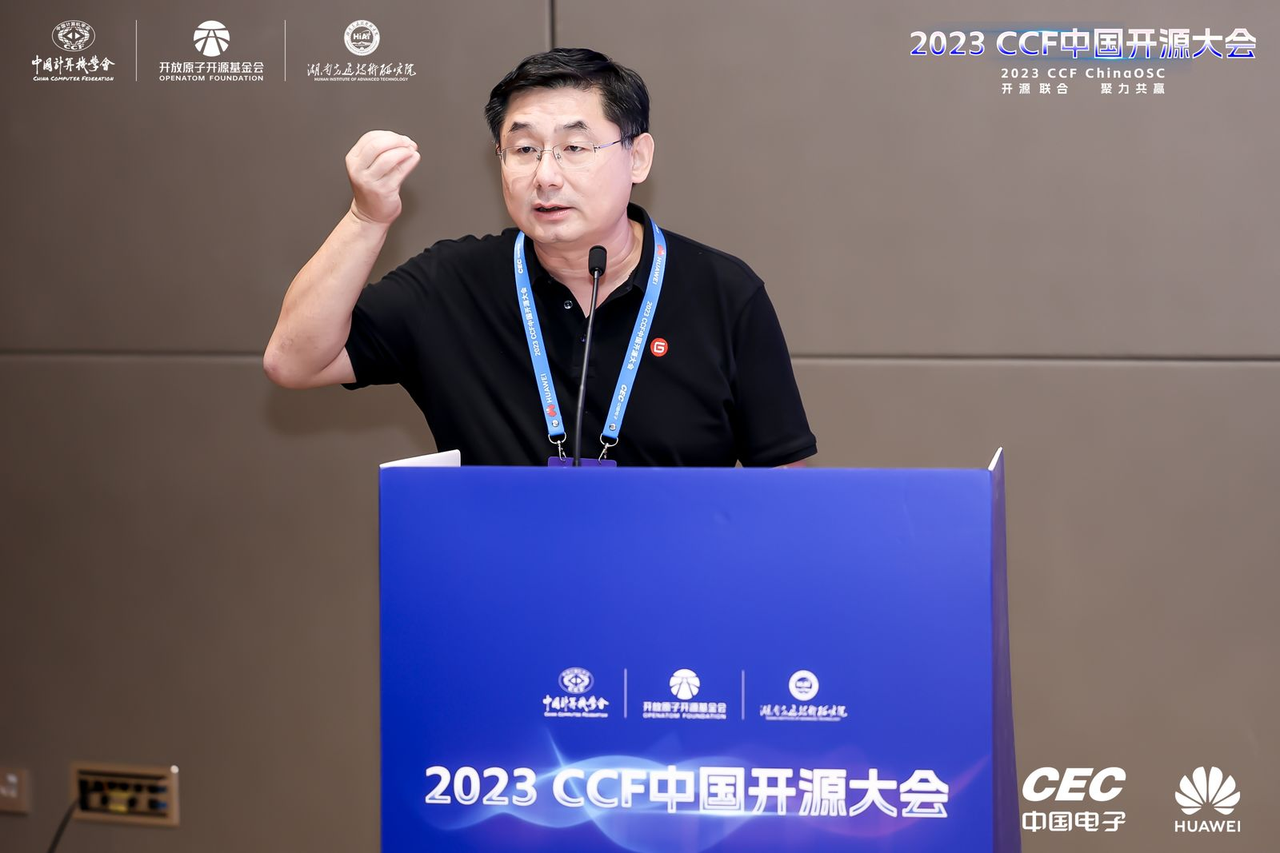
Finally, Ma Yue proposed that he hopes to gather many open source forces to build such an open plug-in platform, prosper the open source business ecosystem, and exchange what is needed. Open Source China has accumulated more than ten years of commercialization experience and capabilities. Its Gitee platform has already settled in more than 270,000 small and medium-sized teams, serving more than 600 large enterprises in China with a valuation of more than 10 billion yuan. In the future, Open Source China will empower more open source companies with these experiences and capabilities through this plug-in platform.
Tan Zhongyi, a member of the Standing Committee of the CCF Open Source Development Committee, discussed the two major directions of "open source and commercialization of AI to B". Tan Zhongyi believes that the current difficulty in LLM to B business is to find a Killer scenario - one with sufficient commercial returns that can cover the costs of large model Finetune and Serving as well as LLM application development and operation and maintenance. However, LLM technology has inherent constraints: first, it cannot avoid the problem of illusion. To C business needs to meet the regulations of the Cyberspace Administration of China, and the compliance cost is very high; second, it cannot avoid the problem of probability, and serious scenarios of To B may not be suitable. . Therefore, the breakthrough may lie in: first, within the enterprise, where creativity or real-time checking of generated content is more important, such as internal research and development of code generation tools and scenarios in the game industry; second, in the e-commerce field, such as promotions, advertising, etc., because this It is the potential market closest to money, and it is easy to form a data closed loop.
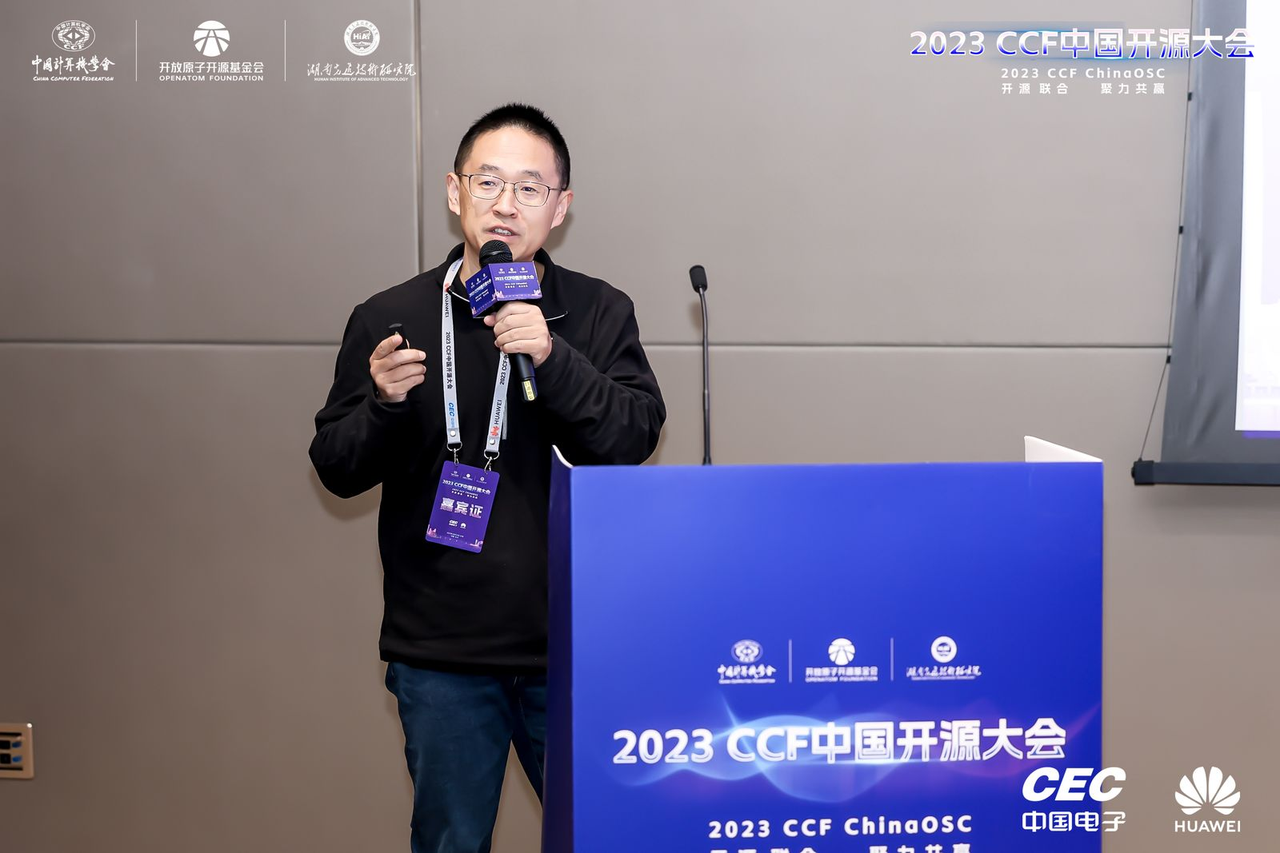
As for the key role of open source in the LLM industry, there are two main ones: one is to reduce costs. Open source is the key to reducing the innovation cost of the entire industry, that is, the democratization of AI. This requires the entire academic community and industry to work together to reduce costs, and the open source base model is the most important part of the entire ecosystem; the second is to establish trust. For artificial intelligence to make people trust it, it must be open and transparent. Once this problem is solved, a market worth 10 trillion yuan may take off.
Liu Song, Vice President of PingCAP, shared the commercial evolution logic of TiDB from open source to serverless. According to him, PingCAP's commercialization path can be summarized in "four steps": create an open source project that meets the urgent needs of the times, obtain large-scale user deployment and feedback for open source products, create a global commercialization model, and continue to create satisfying Product form that meets the ultimate user needs.
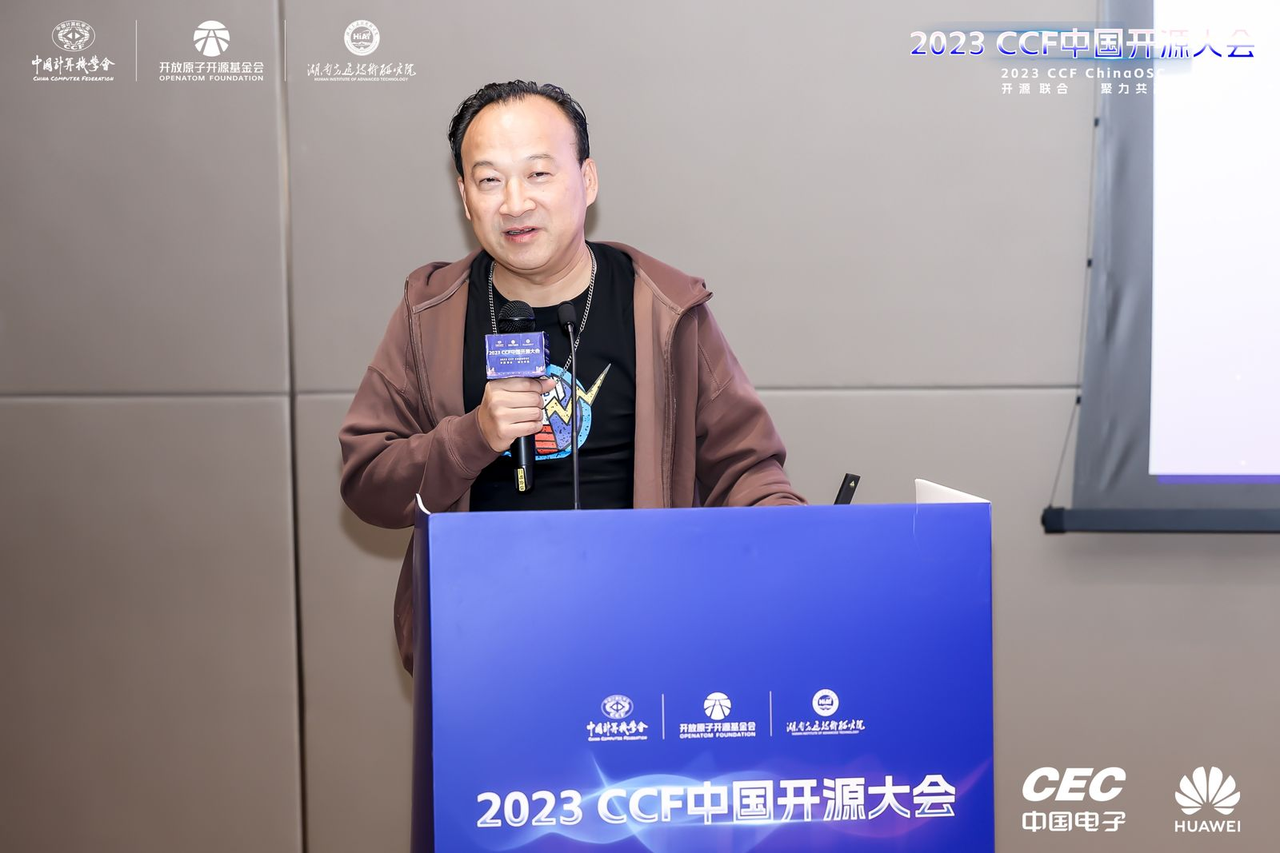
Liu Song said that in the face of a new technology environment where "open source + cloud" promote and evolve each other, TiDB's evolution direction has shifted from technology leadership to "technology + experience" leadership. Currently, PingCAP has built three major product forms around TiDB: TiDB Enterprise Edition, TiDB Cloud (fully managed), and TiDB Cloud Serverless. Among them, TiDB Cloud provides fully managed DBaaS (Database-as-a-Service) services, which greatly lowers the threshold for using cloud databases; TiDB Cloud Serverless is based on cloud-native/multi-cloud design and adopts AI-Ready architecture to achieve the ultimate It is low-cost, extremely flexible, has features such as automated resource scheduling capabilities and flexible integration of AI capabilities.
Ren Zidong, an expert from Tongxin Software Solution Center, shared the topic "Exploration of Commercial Development of China's Open Source Operating System". Ren Zidong believes that 2020 is a milestone year for domestic Linux. Before 2019, there were more than 10 domestic operating system companies in our country. With policy guidance and the choice of market competition strategies, domestic operating system manufacturers have integrated new business formats. Starting from 2020, two mainstream domestic operating system companies have initially formed. Tongxin is one of them. By 2022, the business form of the industrial chain will be formed. The scale of leading operating system companies also shows the characteristics of "Qianbaishi": operating system development team of more than 1,000 people, kernel R&D team of more than 100 people, and open source compliance lawyer team of more than 10 people.
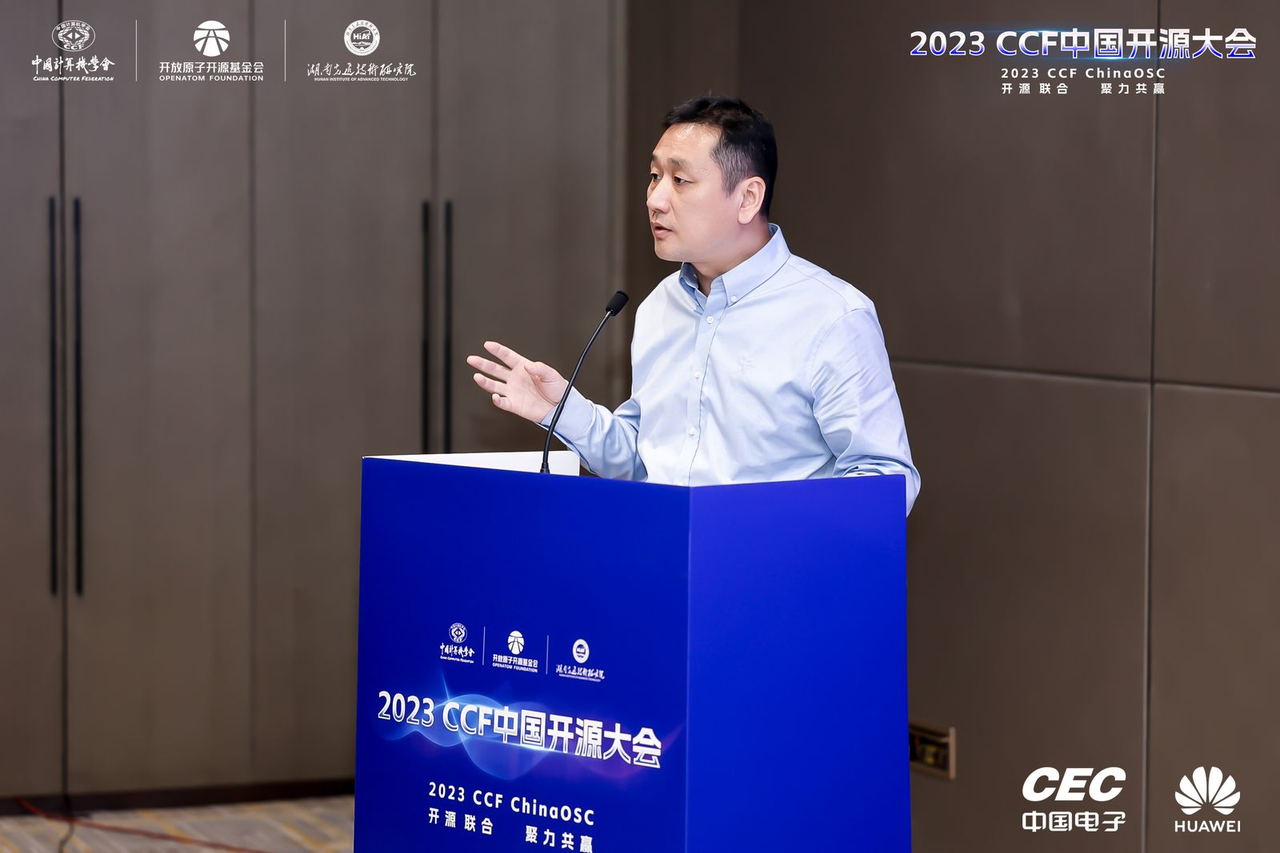
Currently, the UOS UOS ecosystem is one of the largest autonomous operating system ecosystems in China. Tongxin has completed the adaptation of many mainstream foreign commercial software based on the server operating system, covering mainstream database products from Oracle, IBM, SAP, Microsoft and other manufacturers, and mainstream AI artificial intelligence products from Google, FaceBook, Baidu, Huawei and other manufacturers. As well as mainstream middleware products from Oracle, IBM and other manufacturers.
If the open source community does well, how can it be turned into money? In a speech titled "The Road to Commercialization of Beluga DataOps Open Source Matrix", Beluga Open Source CEO Guo Wei mentioned that Beluga spent 8 months exploring a set of open source business transformation processes and accumulated tens of millions business pipeline and hundreds of leads, and the resources invested are just one salesperson, without any marketing fees.
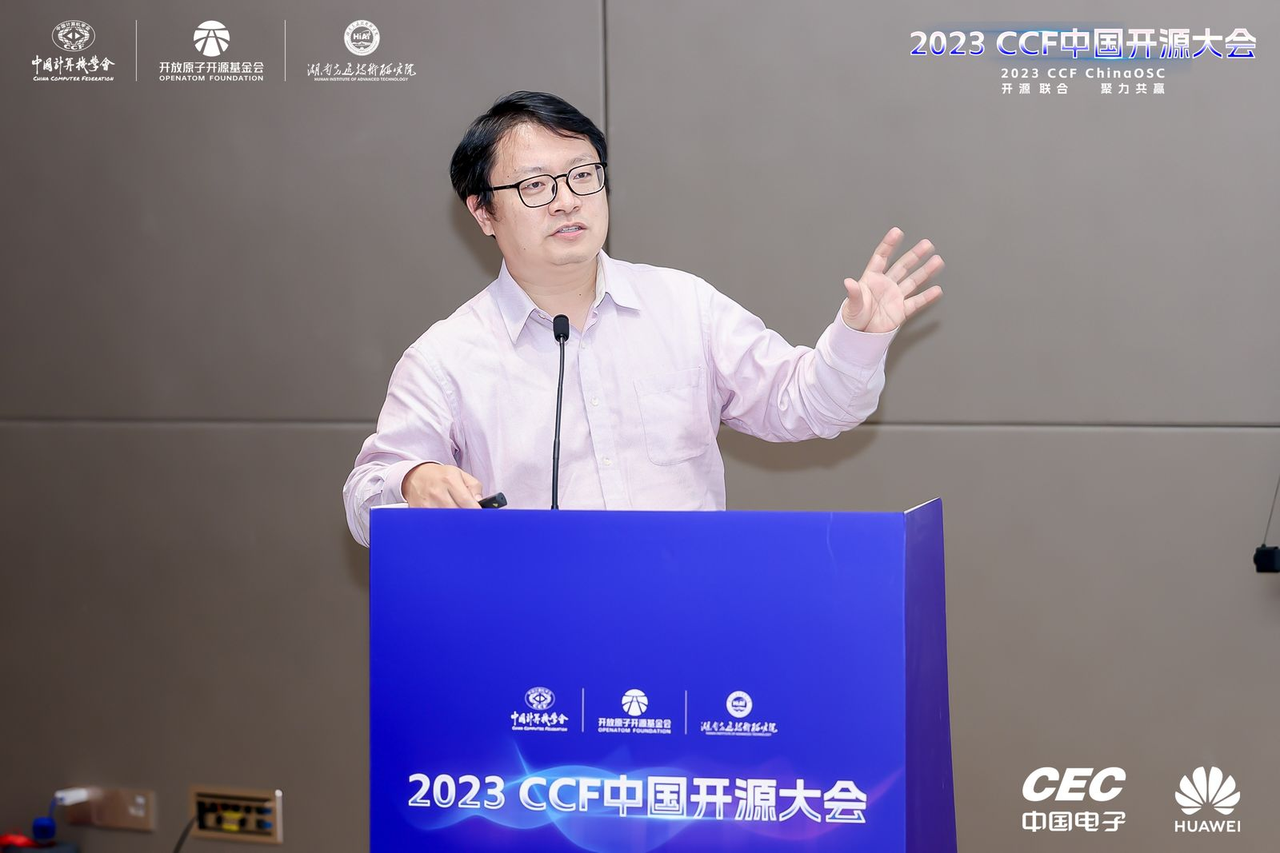
Guo Wei attributed these achievements to several major principles: "Others do PetroChina, I do Sinopec", that is, be everyone's friend; the positioning of open source projects must be clear, and the pain points of business functions must be clear, so Beluga Open Source adopts the "Open Source Matrix+" OpenCore" route; open source commercial software should pay attention to "industry attributes", gain insights into pain points by industry, and promote word-of-mouth marketing; never forget the original intention, keep the mission in mind, and constantly upgrade the open source version, so that the commercial version can have a chance; be brave enough to explore, embrace new technologies, and expand the market Models are integrated into software, and so on.
Finally, he mentioned that the open source trend has not passed, and the temperature is just right. Faced with challenges such as the economic downturn, calming capital, and higher revenue requirements, we should also see more opportunities in the industry. For example, vicious competition has reduced, Internet companies have begun to pay for tools, and subscription systems are more easily accepted. Overseas markets gradually grow and so on.
Li Guang, co-founder of TDengine & VP of Commercialization, shared how TDengine evolved from an open source time series database to an industrial big data processing platform. He said that if a software is open source, it means it is trustworthy and controllable. The business logic of TDengine is to reshape the 2B sales model, build community and brand with open source, and build GTM path with open source. Expand influence through open source, establish a brand, form a developer community, build competition barriers, quickly obtain market feedback, quickly iterate, quickly build an ecosystem, and gain user trust. On the other hand, traditional 2B sales will evolve into a 2C model, traditional door-to-door visits will evolve into online sales, and resource-based sales will be transformed into technology and product-based sales.
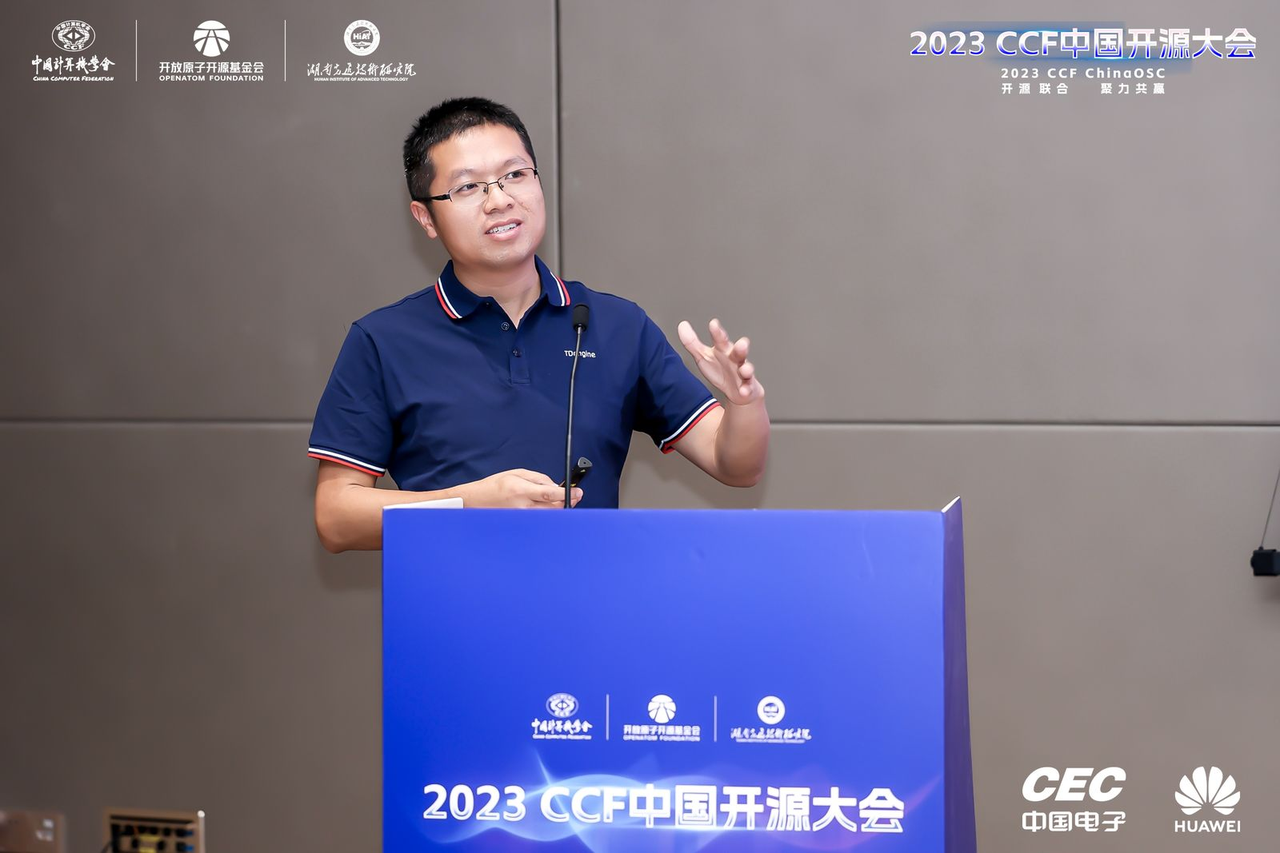
Currently, TDengine provides three products and services. The first is the open source community version - TDengine OSS, which is mainly used to establish a developer community and build an ecosystem; the second is the enterprise version - TDengine Enterprise, which supports independent deployment and is implemented in accordance with TBL (Term Based License). ) annual service subscription or permanent Licenese model sales; the third is the cloud service version - TDengine Cloud, which directly provides SaaS services on cloud platforms such as Alibaba Cloud, AWS, Huawei Cloud, etc., and is billed based on data volume and duration.
Finally, he said that the commercialization logic of open source software has changed, from focusing on growth to emphasizing profits. The era of disputes among 2B software companies is over, and only by going deep into the black soil of the industry can we survive.
Li Qian, founder & CEO of KodeRover/Zadig, analyzed why the company chose to delve deeper into China rather than go overseas. It is reported that during the commercialization process, KodeRover also faced many problems, such as spending time polishing the product, but users were not willing to pay; large customers with needs and budget came to the door, but because their team size was too small, they could not provide services for them. Providing large-scale services and so on, but KodeRover eventually developed a corresponding strategy. Li Qian summarized the company's commercialization ideas as follows: Technically, use open source to build good infrastructure and build product and brand power; commercially, the Chinese scene helps the upgrade of "new IT" (such as hard technology innovation, upgrading and reorganization of old industries), Create customer value; create value sustainably, link widely, and provide customers with the best solutions.
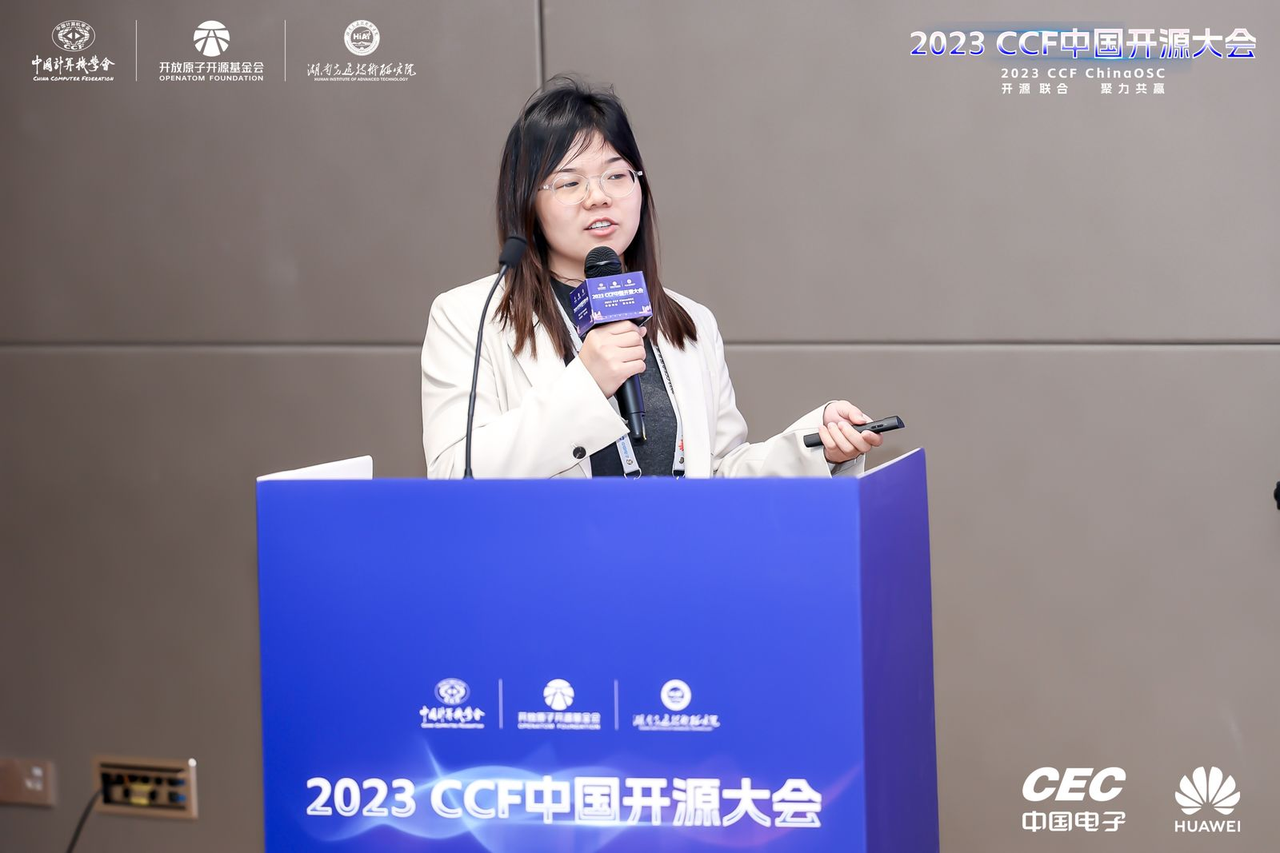
Li Qian mentioned that Zadig is software for production software with the purpose of delivering digital business. Zadig has been open source for two years, with a total of nearly 30,000 enterprise installations. It is currently the most widely implemented platform in the field of cloud-native DevOps in China, and has become a master key for companies including Bytedance Feishu, Jikrpton, Lotus, Xpeng, Qiniu Cloud, and WiFi , Yikuaibao, iMile, TT Voice, Guoquan, Yaoshibang, Dashenlin, Laobaixing Pharmacy, Yifeng Pharmacy, Xiaocai Tian and other benchmark enterprises provide software delivery that is used in depth and frequently every day by thousands of corporate R&D engineers platform.
Jin Jinhua, co-founder and CPO of EMQ Yingyun Technology, delivered a speech titled "EMQ - Commercialization of Open Source Digital-Real Fusion Basic Software". It is understood that as the world's leading IoT basic software provider, EMQ founded and leads many world-renowned edge software open source projects such as LF Edge eKuiper, NanoMQ, and Neuron.
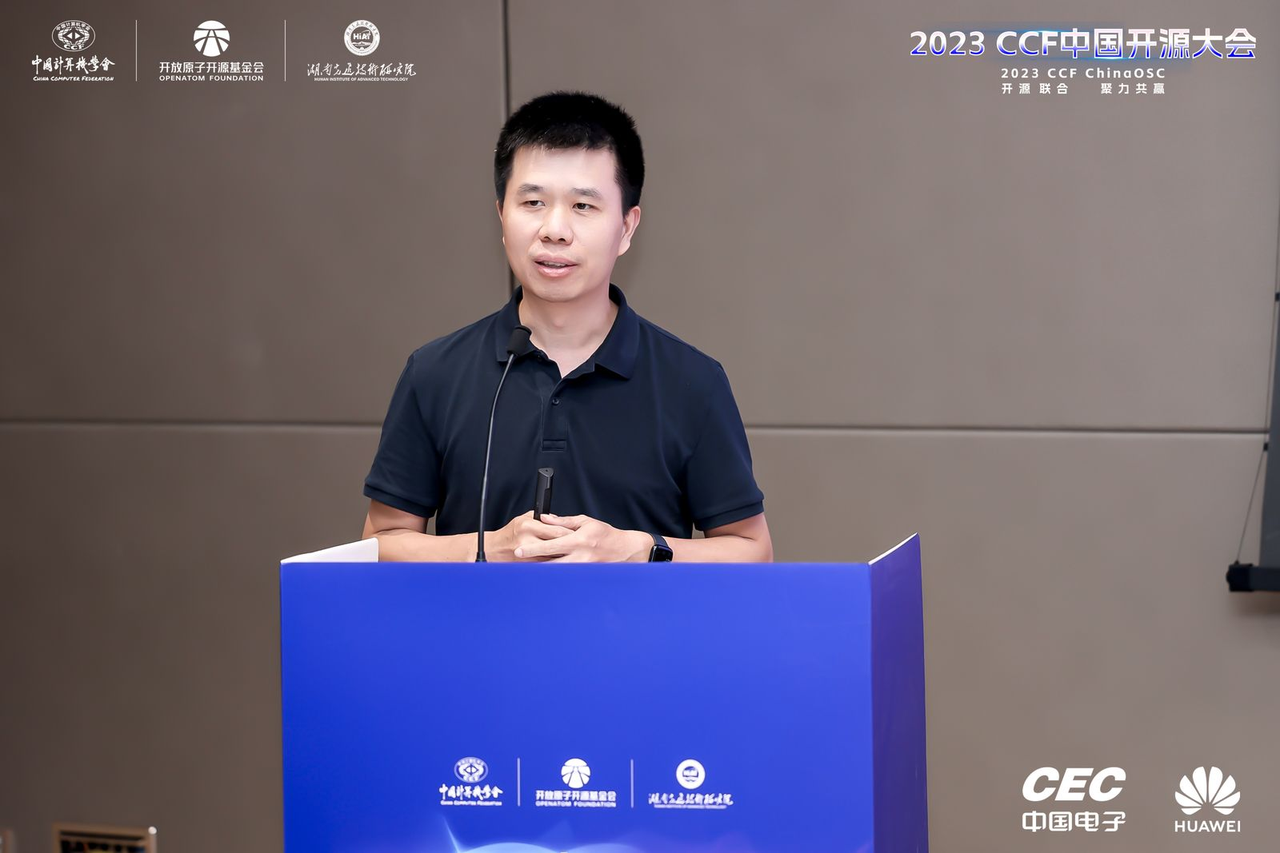
Jin Jinhua said that the Hosting (Cloud) model is a direction for future products. Currently, there are three types of EMQ Cloud commercial services. The first is Serverless. You can get a secure and scalable ServerlessMQTT service in a few easy steps. The fully managed feature eliminates the need for users to care about infrastructure and resource management. It is especially suitable for individual developers, small and medium-sized projects, development and testing environments, and evaluation of technical frameworks. The second is the proprietary version, an independently deployed fully managed MQTT service with higher performance guarantee and customizability. It is especially suitable for enterprise-level projects with high performance and stability requirements. The third is BYOC (Bring Your Own Cloud). Users deploy EMQX clusters on their own clouds and hand them over to the EMQX team for hosting. This is suitable for enterprise-level projects with strict data security and compliance requirements, maximizing the use of existing Cloud resources.
Jiang Zhitong, Vice President of Investment at Tianji Technology, explained the investment logic in the era of open source and AI. She said that in the AI 2.0 era, from a global market perspective, capital gives a significant premium based on future growth expectations of large models. The current general model pattern is clear, with the emergence of dual leading companies Microsoft and Google, and the emergence of a large number of unicorns in the tool layer, application layer, and vertical fields. The global market is paying attention to the commercialization of large models, and the application ecology of 2C/2B is flourishing around efficiency, creativity, and emotion.
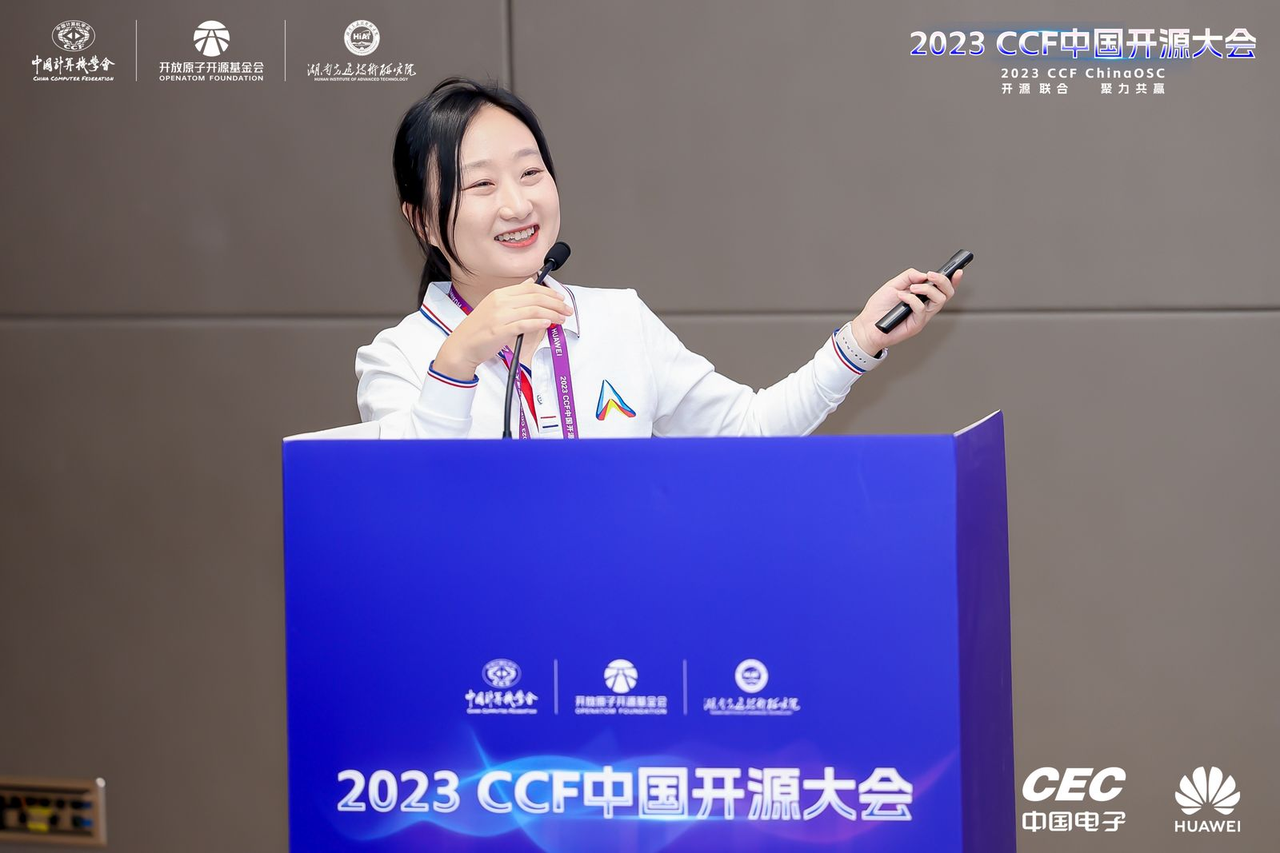
At the same time, open source is accelerating the implementation of AI 2.0 and the prosperity of the AI ecosystem. Open source is an inevitable choice for large-scale model infrastructure, and the extended services and applications have huge business opportunities. The investment strategy in the AI open source era is centered on core figures, early layout, and taking advantage of industrial resources. Key figures, network effects, scarce data, and the integration of software and hardware are all factors that may become the moat of the enterprise, and are also the focus of investment in the AI open source era.
So where are the opportunities in the Chinese market? Jiang Zhitong believes that it mainly lies in two aspects, one is infrastructure and the other is vertical industries. The application of large models in China is still growing rapidly. After the open source acceleration model is implemented, companies that can benchmark the global market will appear in the entire AI ecosystem. In short, the domestic AI market is still in the stage of giant formation.
Lei Jun announced the complete system architecture of Xiaomi's ThePaper OS, saying that the bottom layer has been completely restructured. Yuque announced the cause of the failure and repair process on October 23. Microsoft CEO Nadella: Abandoning Windows Phone and mobile business was a wrong decision. Both Java 11 and Java 17 usage rates exceeded Java 8 Hugging Face was restricted from accessing. Yuque network outage lasted for about 10 hours and has now returned to normal. The National Data Administration officially unveiled Oracle. Launched Java development extension for Visual Studio Code. Musk: Donate 1 billion if Wikipedia is renamed "Weiji Encyclopedia" USDMySQL 8.2.0 GA